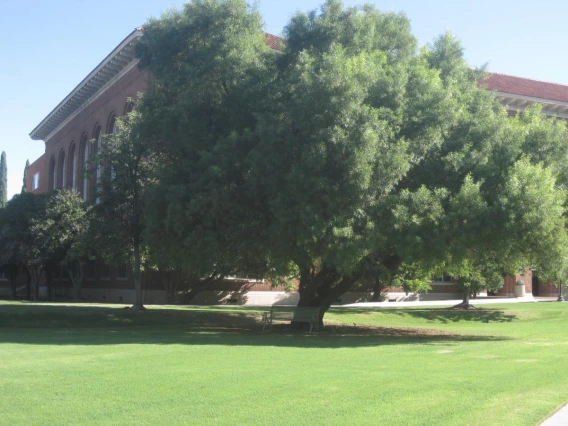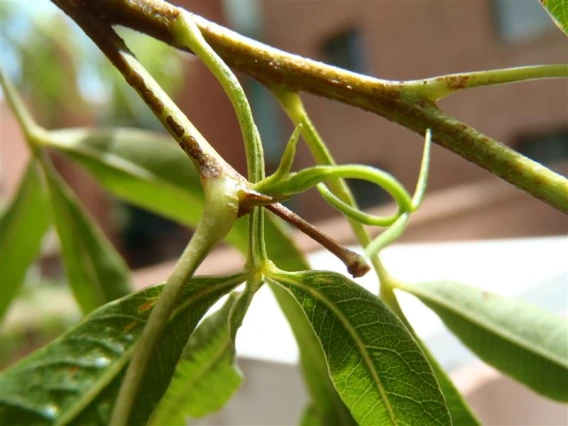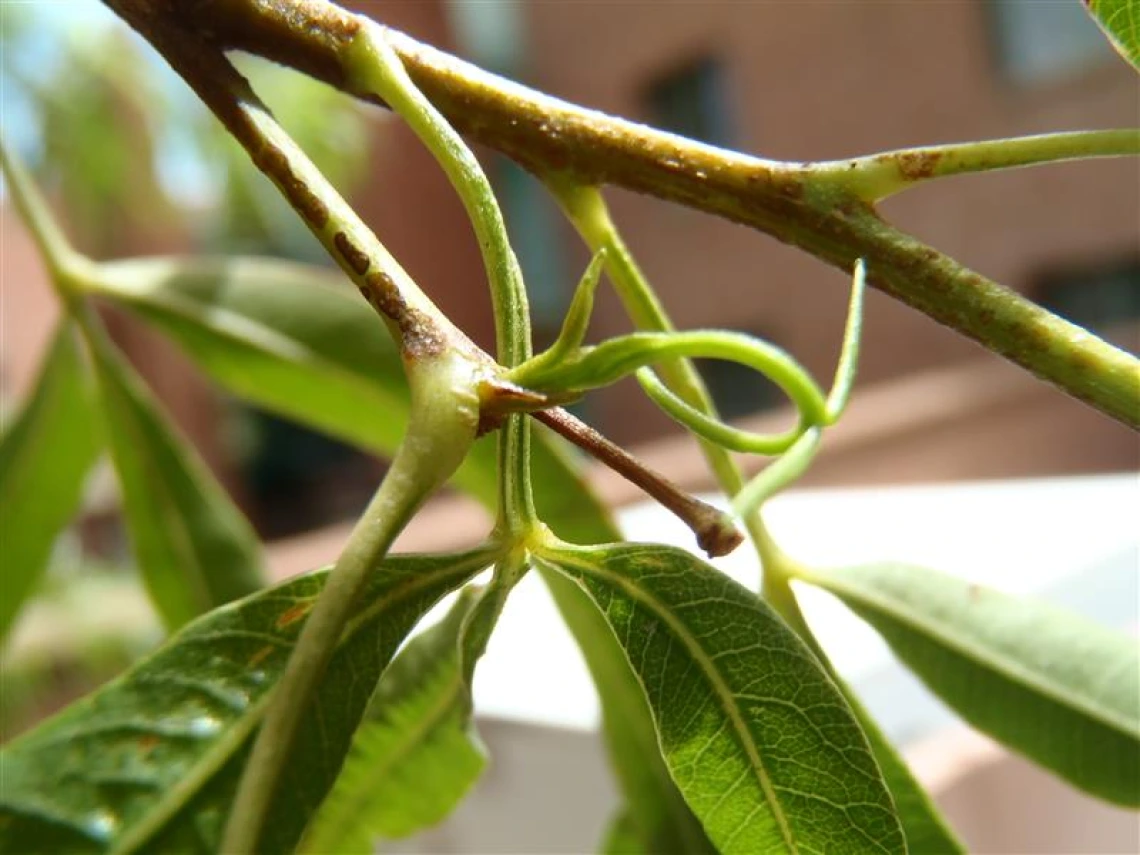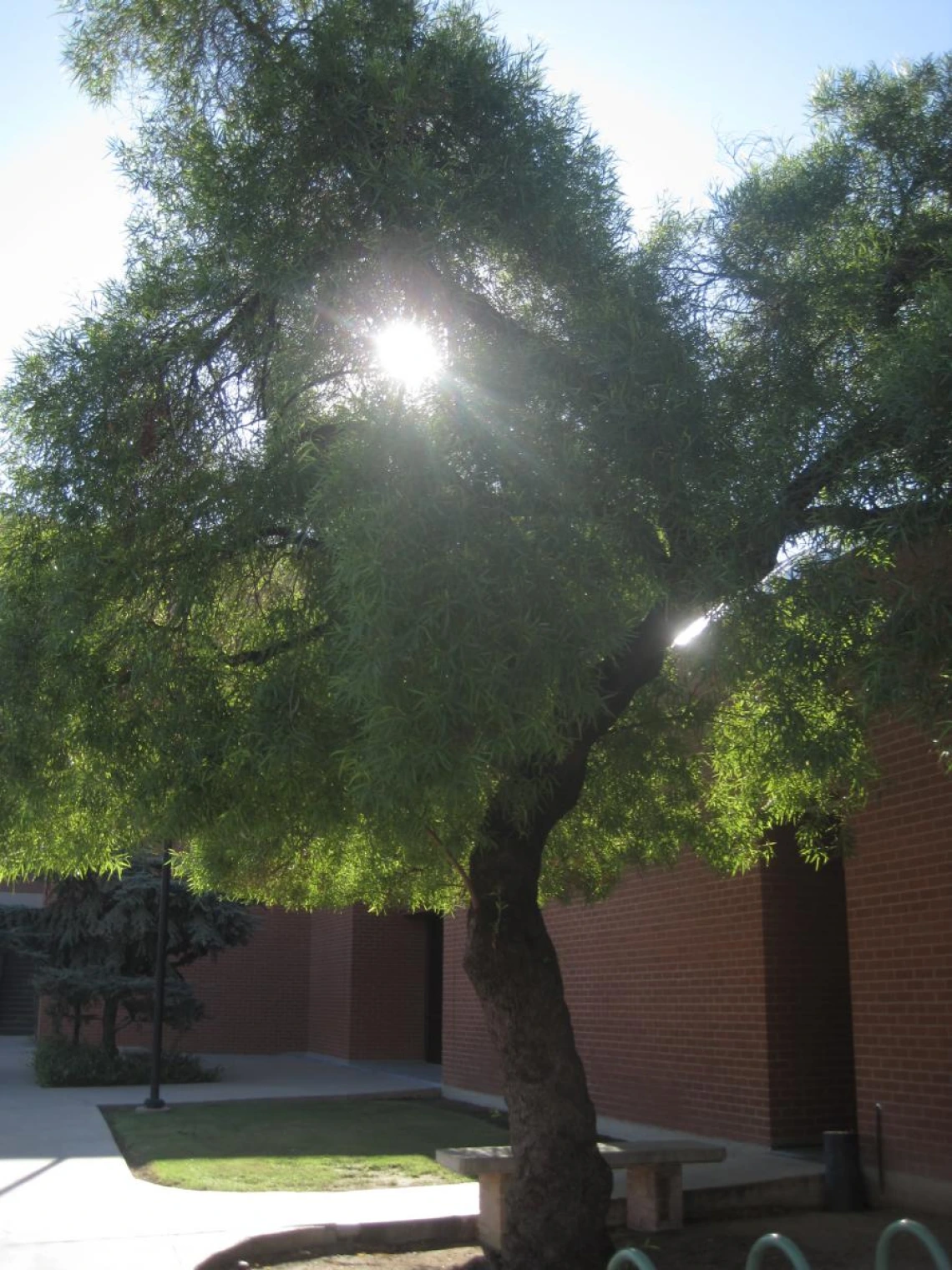Arboretum History Virtual Tour
Searsia lancea | Anacardiaceae | African sumac
Historical Context:
In an effort to identify landscape ornamentals adapted to the desert climate, UA President Homer Shantz planted the first African Sumac in Tucson in 1928. The tree proved to be highly tolerant of the environmental stresses in this urban setting and was introduced into the nursery trade. For many decades, African sumac were very popular landscape ornamental tree for Tucson, however, they have since been found to be invasive and weedy. For better or worse, we have the oldest and most majestic specimens in the state and still admire them as a symbol of our commitment to sustainable horticultural research. In the 1940s, RB Streets, a faculty in the College of Agriculture, planted the two African sumac trees found today on either side of the Arizona State Museum (then, the library).













